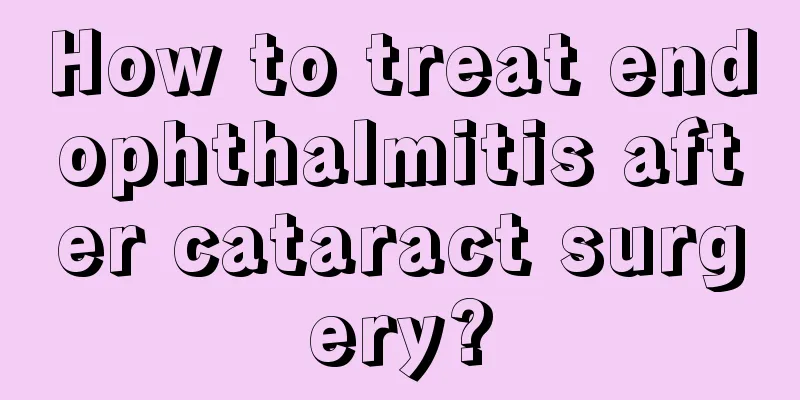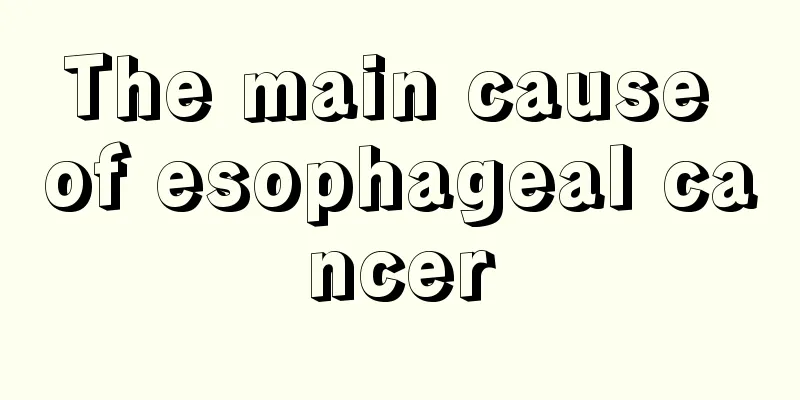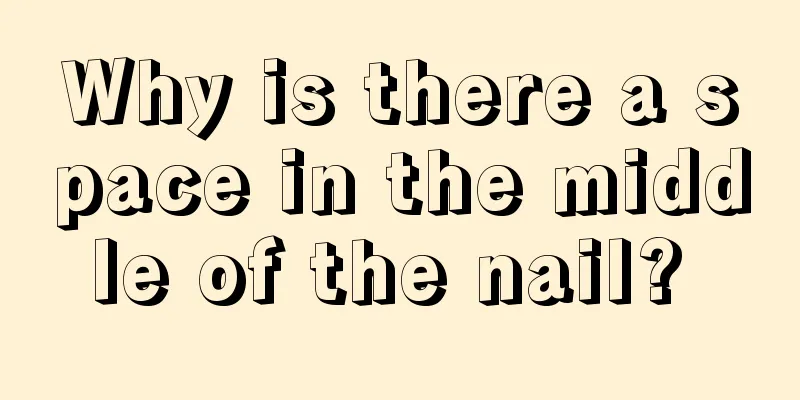How to treat endophthalmitis after cataract surgery?

|
Endophthalmitis after cataract surgery is a relatively common postoperative eye infection. Endophthalmitis is very detrimental to postoperative recovery and can also cause some harm to the eyes, easily leading to eye infection or bacterial growth. There are many ways to treat endophthalmitis, which can be controlled through intravenous injection of drugs. Etiology and pathogenesis 1. Exogenous endophthalmitis: It is often caused by pathogens directly entering the eye due to penetrating injuries to the eye, intraocular surgery, or corneal ulcer perforation. Penetrating injuries to the eyeball, such as small penetrating wounds (injection needle punctures, wire punctures, etc.), plant punctures (reeds, bamboo sticks, etc.) or foreign bodies retained in the eye are most likely to cause endophthalmitis; bleb infections are more common after intraocular surgeries such as cataract surgery and glaucoma surgery. Common pathogens include Staphylococcus aureus, Streptococcus, Pseudomonas aeruginosa and Bacillus cereus. In addition, Staphylococcus epidermidis and Propionibacterium acnes are often the pathogens of endophthalmitis after cataract surgery. Fungal infections often occur in vegetative eye penetration injuries. 2. Endogenous endophthalmitis: refers to bacteria or fungi that spread into the eye through the blood circulation, also known as metastatic endophthalmitis. It is common in patients with immunodeficiency, use of immunosuppressants, long-term use of antibiotics, diabetes, chronic renal failure, liver disease, oral infection, postoperative tumor, endocarditis, etc. Common pathogens include Staphylococcus, Streptococcus, Haemophilus influenzae, etc. The common pathogenic fungus is Candida albicans. Drug treatment 1) Systemic medication: usually administered intravenously. Generally, broad-spectrum antibiotics are used that can cross the blood-retina and blood-aqueous humor barriers. However, due to the existence of the above barriers, it is difficult for antibiotics to reach effective concentrations in the eye. In view of the above reasons, systemic medication can only be used as an adjunctive treatment for endophthalmitis, mainly to prevent and control the extraocular spread of inflammation. 2) Eye drops: Although many antibiotic eye drops can enter the anterior chamber, it is difficult for them to penetrate deeply into the vitreous body, so they have poor efficacy in treating endophthalmitis. Infections in corneal scleral wounds can be treated with frequent application of antibiotic drops. Since this route of administration results in a certain drug concentration in the anterior chamber, it plays a certain role in the prevention and treatment of endophthalmitis caused by anterior segment penetrating injuries. At the same time, using glucocorticoids and atropine eye drops can reduce inflammation of the pigment membrane and keep the pupil dilated to prevent adhesion, which facilitates the next step of observation and treatment of the injured eye. 3) Subconjunctival and juxtabulbar injection: These two injection methods are commonly used in clinical practice, but due to the influence of the blood-aqueous humor barrier, the drug concentration in the vitreous is very low and cannot achieve the purpose of treating endophthalmitis. In order to maintain the effective concentration of antibiotics injected into the vitreous, it is more appropriate to administer the drug by this route for 5 to 7 days. 4) Intravitreal injection: Intravitreal injection of antibiotics can enable intraocular antibiotics to reach effective therapeutic concentrations. The volume of intravitreal injection is generally 0.1 ml. Generally, combination therapy is required (two antibiotics combined, rarely triple therapy, with or without dexamethasone). Depending on the patient's clinical response to treatment, the retention time of antibiotics in the eye, and the results of aqueous humor, vitreous smear, and bacterial culture, repeated injections may be considered 2 days after the first injection. Considering the toxic effects of antibiotics on the retina, the second injection is not routinely used. Antibiotics injected into the vitreous cavity can easily act on the retina and produce toxic reactions to the retina. If the patient has undergone vitrectomy, the dose of intravitreal antibiotics should be reduced by 50%. After 24 hours of anti-infection treatment, if the patient has a significant clinical response, systemic glucocorticoids may be considered to reduce vitreous inflammatory response and further organization. |
<<: How to wash chili oil off white clothes?
>>: The difference between borscht and beetroot soup
Recommend
Raised acne scar on nose
I believe that many people have had acne, either ...
What tests can detect nasopharyngeal cancer
There are many original examination methods. Naso...
Do you know the origins of the top ten classic foods?
Do you think popcorn and chewing gum are American...
How to deal with alkaline stains on the wall?
There are so many things to pay attention to when...
Why do my hands go numb in the middle of the night?
Waking up in the middle of the night with numb ha...
Will eating spicy hotpot make you fat
Malatang is a very popular food. Due to its rich ...
What is the reason for high crystallinity in urine routine examination
There are many reasons for high crystallization i...
What is the optimal distance between the sofa and the TV
Many young parents like to sit on the sofa with t...
Treatment and prognosis of sequelae of cerebral thrombosis
In recent years, the incidence of cerebral thromb...
How to quickly remove mosquito bites
When summer comes, there are not only watermelons...
What are the benefits of raising birds?
Whether in the city or in the countryside, we oft...
Feet sweating while lying in bed in winter
The weather is relatively cold in winter. General...
Is it serious if thyroid cancer does not cause pain or itching?
Thyroid cancer patients do not feel pain or itchi...
There are three symptoms of kidney cancer
Kidney cancer can cause great trouble to people&#...
What are the symptoms of advanced liver cancer? Four symptoms of advanced liver cancer are very common
Since the early symptoms of liver cancer are not ...









